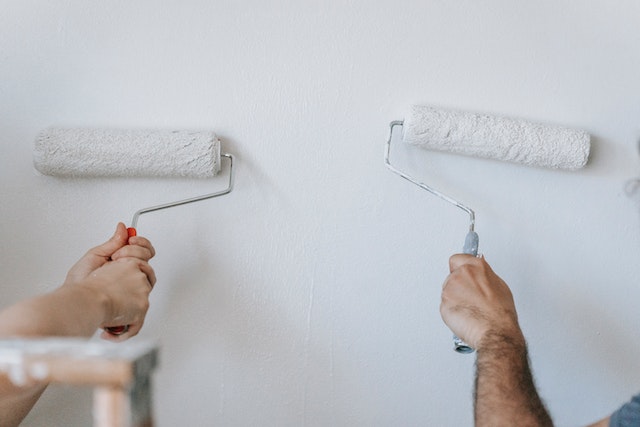
If you’ve been receiving requests from tenants to paint the rental, you might wonder whether to allow it or not. Landlords often use a neutral palette such as gray, white, and beige in their units to ensure that the colors match different furnishings but some renters may still wish to apply specific colors.
Tenants may offer to paint the rental by themselves so they’ll be absorbing the costs of the paint materials and the tools. This means that you won’t have to pay anything at all however there are still some downsides to allowing this.
This article will provide you with several options on how to handle paint requests from your renter.
Saying No to the Request
You can always turn down the tenant’s request since this is your rental place. But do it in a friendly and polite manner. You can also provide other solutions to change the interior colors of your property.
One of which is proposing renters use wallpaper. This can be removed easily compared to repainting the unit again when the tenancy ends and the resident decides to move out.

But make sure that high-quality easy-to-remove wallpapers are used so they won’t ruin the walls of your unit. If not, you might encounter unattractive marks on your walls, and you might even need to have them fixed so it pays to be attentive.
Saying Yes Conditional
You can permit the occupants to repaint the unit so long as they observe certain conditions. This method tends to be a win-win situation for both parties. You, the landlord, still retain control over the painting updates and can reduce any negative results while the tenant gets to customize their living space.
Below are important points to agree on with the renter prior to painting the unit:
Colors Used
Provide an array of colors that are acceptable for renters to choose from. This way, you can avoid flashy colors that can make re-renting your unit more difficult when the tenancy ends.
Ideally, you want colors that you think would still appeal to a wide range of tenants to reduce the need of repainting the unit come to the end of the tenancy.
Specific Areas and Rooms
You can restrict painting to certain areas. Changing the paint color of the entire unit can take a lot of time, especially if you’ll want to have it repainted back to the former color.
Instead, you can allow tenants to repaint certain rooms or walls as this will still allow them to customize the space while making restoration of the unit easier for you.

Repainting Costs
To limit future disputes, it’s best to talk with your tenant about the repainting cost. This way, when the tenancy ends, you have the budget to use for a repainting session. It will be easy to change back to the original paint colors. Before requesting this fee, review local regulations whether this is allowed.
Saying Yes in Full
Just as you retain the final decision to say no to the renter’s request, you also reserve the right to fully approve the request without setting conditions. This is a straightforward response and will likely please your tenants. But before doing this, it’s essential to research the merits and drawbacks of giving unconditional approval.
Having conditions in place removes possible stresses that are likely to come up. Have a conversation with the renter before the painting project takes place so you’re aware of what the tenant’s vision is. It allows you to offer suggestions and inform them about your opinion, too.
Being flexible with painting projects can be risky for landlords due to a variety of consequences. But being lenient also leads to building a stronger relationship with residents. The flexibility makes tenants happy and encourages them to stay for the long term since it makes the rental space feel like home to them.

Things to Consider Before Repainting the Property
A painting project can lead to several outcomes depending on how much of the property is repainted and the quality of the paint job. As the rental property owner, you can make the final decision of whether or not to allow the tenant's request.
You also need to review your state law regarding lead paint disclosure. Petitions to change the paint may be raised by the tenants since this is a health issue. Thus, a repaint is a request that is acceptable. That said, any changes to the property that could disrupt lead paint need to be carried out carefully and by professionals.
Mitigating the Risks of Repainting the Rental
To reduce the risks landlords face when renters paint the rental, they can include a special clause and clearly state who pays the painting fees. They can also set limits such as requiring a professional contractor, final approval of specific colors, and expecting the unit to be painted back to its original color when the renter moves out.
If you discover that a tenant had gone ahead with a paint project without seeking your authorization, you can also charge them and deduct the repainting fees from their security deposit.
Bottom Line
Over the course of managing your rental, you’re bound to encounter this request. Being a flexible landlord can lead to a better landlord-tenant relationship but you also need to protect your asset by having specific conditions in place. Landlords are entitled to say no, yes, or set limits on this particular request.
If you need help managing your rental properties, you can also hire a property management company. Contact the team at KRS Property Management today to learn about our services!






